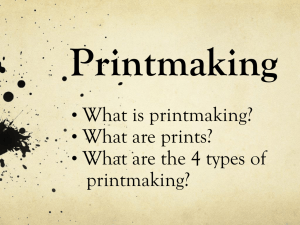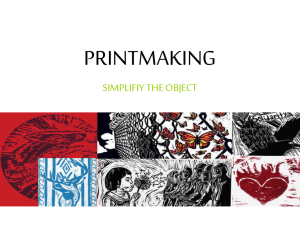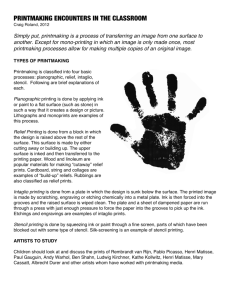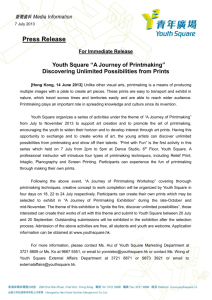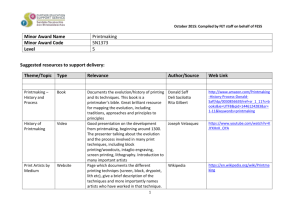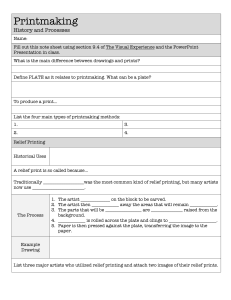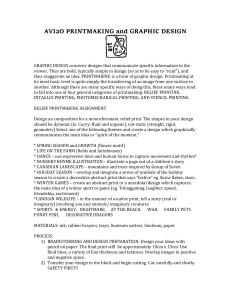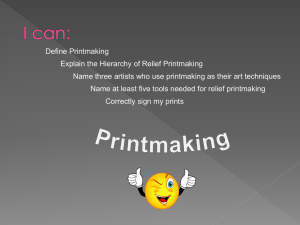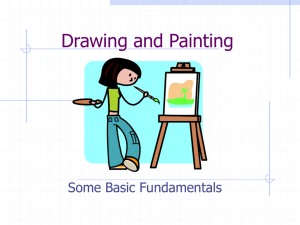Teacher: Tyler McDaniel
advertisement
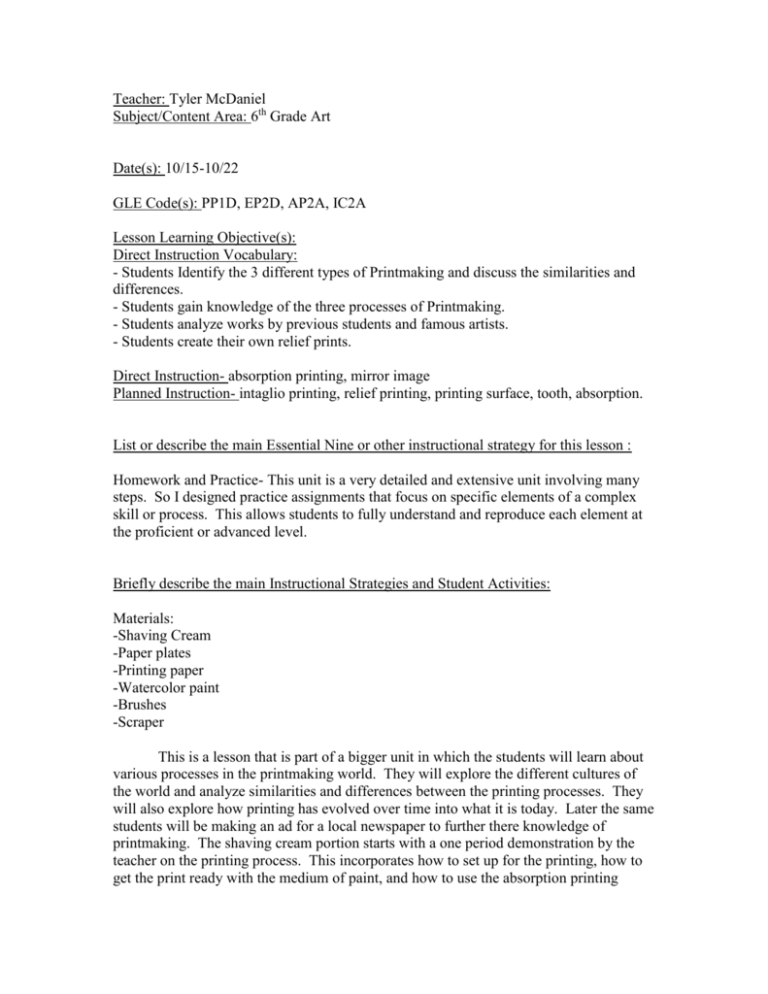
Teacher: Tyler McDaniel Subject/Content Area: 6th Grade Art Date(s): 10/15-10/22 GLE Code(s): PP1D, EP2D, AP2A, IC2A Lesson Learning Objective(s): Direct Instruction Vocabulary: - Students Identify the 3 different types of Printmaking and discuss the similarities and differences. - Students gain knowledge of the three processes of Printmaking. - Students analyze works by previous students and famous artists. - Students create their own relief prints. Direct Instruction- absorption printing, mirror image Planned Instruction- intaglio printing, relief printing, printing surface, tooth, absorption. List or describe the main Essential Nine or other instructional strategy for this lesson : Homework and Practice- This unit is a very detailed and extensive unit involving many steps. So I designed practice assignments that focus on specific elements of a complex skill or process. This allows students to fully understand and reproduce each element at the proficient or advanced level. Briefly describe the main Instructional Strategies and Student Activities: Materials: -Shaving Cream -Paper plates -Printing paper -Watercolor paint -Brushes -Scraper This is a lesson that is part of a bigger unit in which the students will learn about various processes in the printmaking world. They will explore the different cultures of the world and analyze similarities and differences between the printing processes. They will also explore how printing has evolved over time into what it is today. Later the same students will be making an ad for a local newspaper to further there knowledge of printmaking. The shaving cream portion starts with a one period demonstration by the teacher on the printing process. This incorporates how to set up for the printing, how to get the print ready with the medium of paint, and how to use the absorption printing process to make various prints. The second and third periods the students will be allowed to make their own designs in the size of a plate. The students will get about four to five prints per day. Once complete they are put on the drying rack and allowed to fully dry one to two days. On the fourth period the students get to learn a basic outline of the life and artworks of Andy Warhol. They will also analyze the technique that he made popular, splatter painting. They then get in groups of four to five and will do a print with shaving cream the size of a table using banner paper. The students love this part because they get to really let loose with the paint and fling it around. There is also no worry about the paint getting on everything because it is watercolor and it will just wash out. The fifth period is used for the common assessment over vocabulary and the printing process. The remainder of the class (maybe even part of the next class) will be used as a class critique over the prints that the students have made. 1. Critique 2. Lecture 4. Guided Practice 5. Assessment Resources: Famous Artworks (Jackson Pollock, Andy Warhol, Frank Goya), Student work, Printmaking Books. How will students be assessed on the above objective(s)? Formative: Students will use knowledge of the printmaking process to create original sandpaper, shaving cream, and relief print final artwork. Printmaking pieces will be graded using formal rubrics. Summative: Printmaking process knowledge will be assessed using a common assessment.
